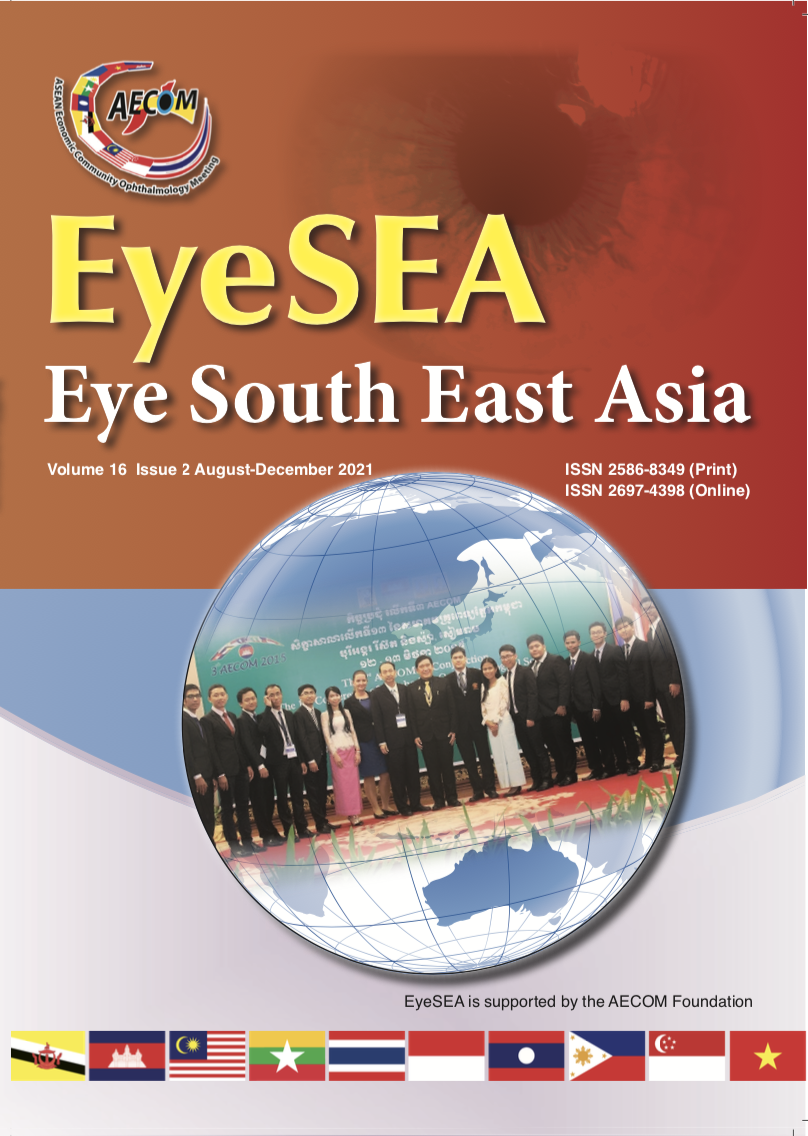Comparison of loteprednol etabonate-tobramycin combination eye drop with prednisolone acetate for treatment of inflammation following cataract surgery.
Main Article Content
Abstract
Title: Comparison of loteprednol etabonate-tobramycin combination eye drop with prednisolone acetate for treatment of inflammation following cataract surgery.
Background: Inflammation is inevitable following cataract surgery. This study compared the efficacy and safety of topical loteprednol etabonate with prednisolone acetate in controlling ocular inflammation following cataract surgery.
Methods: All patients who underwent cataract surgery in Ramathibodi Hospital, receiving either 0.5% loteprednol etabonate plus 0.3% tobramycin ophthalmic suspension or 1% prednisolone acetate, four times daily, were included. Medical records of 299 eligible patients in one year were retrospectively reviewed. Demographic data, clinical findings, and subjective symptoms at days 8 and 28 postoperatively were recorded. The primary outcome was anterior chamber cell reaction grades.
Results: Mean anterior chamber cell reaction grades in loteprednol etabonate and prednisolone acetate groups were 0.124 and 0.350, respectively, at day 8 (p < 0.001), whereas they were 0.024 and 0.046, respectively, at day 28 (p = 0.269) by independent t-test. In these groups, changes in mean intraocular pressure were -1.66 mmHg and -1.56 mmHg, respectively, at day 8 (p = 0.770), while they were -2.18 mmHg and -1.25 mmHg, respectively, at day 28 (p = 0.006).
Conclusion: Loteprednol etabonate plus tobramycin ophthalmic suspension was not less effective than prednisolone acetate in controlling anterior chamber cell reaction during the postoperative period. Reductions in mean intraocular pressure were observed in both groups.
Conflicts of Interest: An oral presentation was partially funded by the Royal College of Ophthalmologists of Thailand.
Keywords: phacoemulsification, postoperative, steroids, intraocular pressure.


